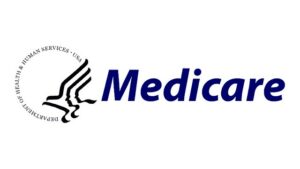Can I Do SEO Myself?
In the vast digital landscape, where visibility is paramount for business success, Search Engine Optimization (SEO) stands as a beacon of opportunity. For small business owners navigating this terrain, the question often arises: Should I take on SEO myself, or is it better to entrust this task to a professional? Let’s explore the nuances of both options in detail to help you make an informed decision and
.

Understanding DIY SEO
The Pros:
1. Cost Savings:
Embarking on the journey of DIY SEO can offer significant cost savings for small businesses. Instead of allocating a portion of your budget to hiring a professional, you can invest your time and effort into learning and implementing SEO strategies yourself.
2. Control and Flexibility:
DIY SEO provides you with complete control over your optimization efforts. You have the flexibility to experiment with different strategies, tweak your approach based on real-time data, and tailor your efforts to align with your business objectives.
3. Learning Experience:
Engaging in DIY SEO can be an enriching learning experience for business owners. By delving into the intricacies of search engine algorithms, keyword research, and on-page optimization, you gain valuable insights that can benefit your business in the long run.
The Cons:
1. Steep Learning Curve:
SEO is a complex and ever-evolving field, which can present a steep learning curve for beginners. Mastering the nuances of SEO tactics and staying updated with the latest algorithm changes require dedication and continuous learning.
2. Time-Consuming Nature:
Implementing effective SEO strategies demands consistent effort and attention to detail. As a business owner, juggling SEO alongside other responsibilities can be time-consuming and may detract from core business activities.
3. Risk of Mistakes:
Without the guidance of an experienced professional, there’s a risk of making costly mistakes in your SEO efforts. From keyword stuffing to improper link building practices, these errors can potentially harm your website’s rankings and credibility.
Exploring the Option of Hiring a Professional
The Pros:
1. Expertise and Experience:
One of the primary advantages of hiring a professional SEO agency or Consultant is gaining access to their expertise and experience. These professionals possess in-depth knowledge of SEO best practices and have a proven track record of delivering tangible results for their clients.
2. Time Savings:
Outsourcing your SEO efforts to professionals frees up valuable time that you can allocate to other aspects of your business. With experts handling the intricacies of SEO, you can focus on strategic decision-making and business growth initiatives.
3. Results-Driven Approach:
Professional SEO agencies are driven by a commitment to delivering results for their clients. They leverage advanced tools and analytics to track the performance of your SEO campaign, ensuring that your investment yields a positive return.
The Cons:
1. Cost Considerations:
Hiring a professional SEO agency or consultant can entail significant upfront costs, particularly for small businesses with limited budgets. However, it’s essential to view this expense as an investment in the long-term success of your business.
2. Lack of Control:
Entrusting your SEO efforts to a third party means relinquishing some degree of control over your optimization strategy. While you can provide input and guidance, the professionals will ultimately be making decisions on your behalf.
3. Finding the Right Partner:
Not all SEO agencies are created equal, and finding the right partner requires careful research and due diligence. It’s crucial to select a reputable and trustworthy agency that understands your business goals and can deliver customized solutions.
Making the Decision
In conclusion, the choice between DIY SEO and hiring a professional depends on various factors, including your budget, time constraints, and level of expertise. If you have the resources and inclination to learn, DIY SEO can be a viable option for small businesses seeking to optimize their online presence. However, if you prioritize efficiency and seek guaranteed results, partnering with a professional SEO agency may be the best course of action.
Ultimately, the key to success lies in selecting an approach that aligns with your business objectives and resources. Whether you choose to tackle SEO yourself or enlist the expertise of a professional, remember that optimization is an ongoing process that requires adaptability, patience, and a commitment to continuous improvement. By making an informed decision and taking decisive action, you can unlock the full potential of SEO and propel your business to new heights in the digital realm.
